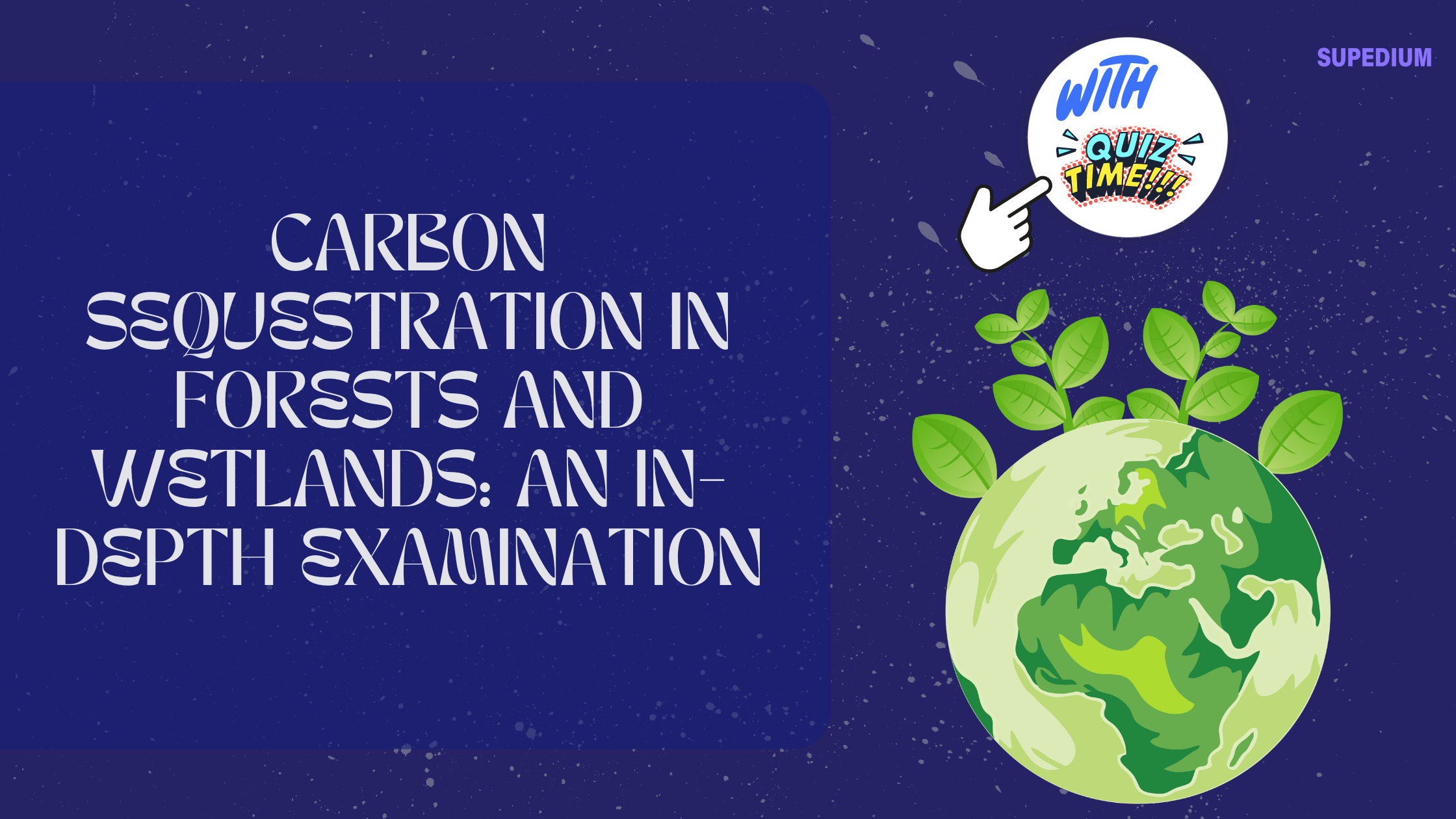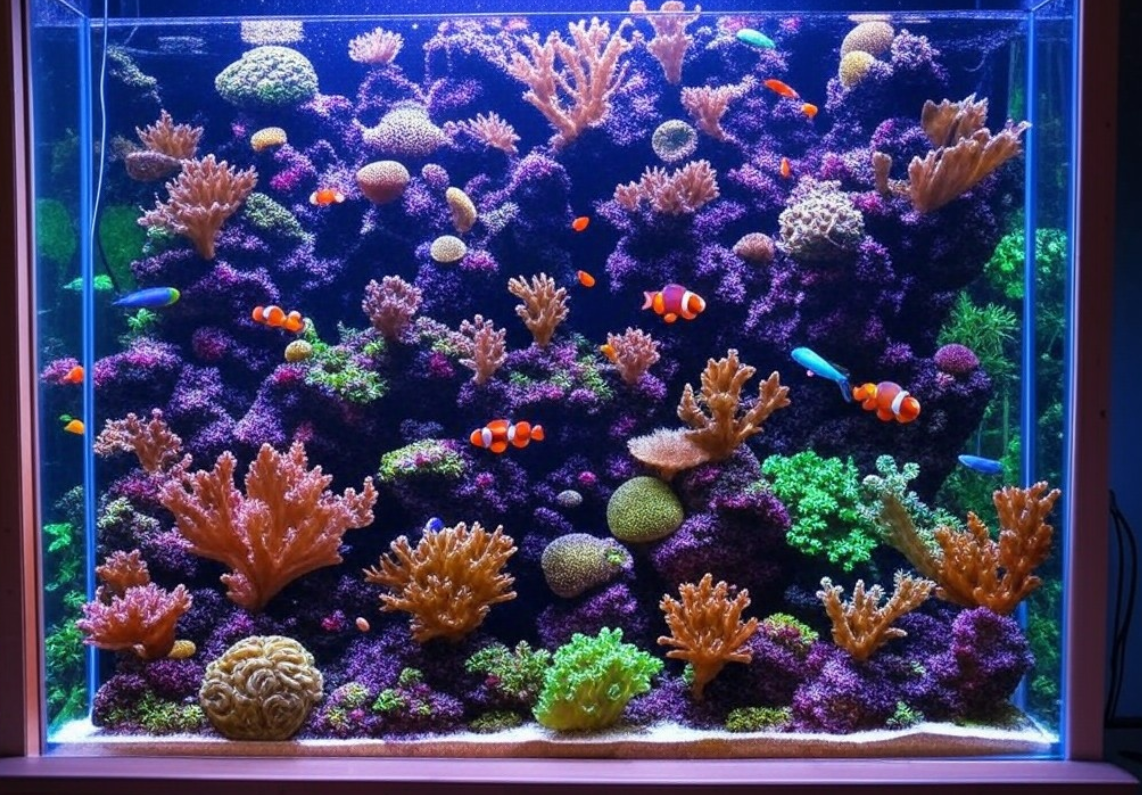Table of Contents
![]()
I. Introduction
A. Definition of Carbon Sequestration
Carbon sequestration refers to the process by which carbon dioxide (CO₂) is captured and stored to mitigate or defer climate change. This crucial environmental process involves the removal of CO₂ from the atmosphere and its storage in various carbon sinks, such as forests, wetlands, oceans, and soils. By capturing CO₂, these natural systems help balance the global carbon cycle and reduce the greenhouse effect that drives global warming.
B. Overview of Forests and Wetlands
Forests are expansive areas dominated by trees and other vegetation. They play a significant role in regulating the Earth’s climate, supporting biodiversity, and influencing water cycles. Wetlands, including marshes, swamps, and bogs, are areas where water saturation significantly impacts the soil and vegetation. These ecosystems are vital for their high productivity, biodiversity, and water purification functions.
C. Relevance of Studying Carbon Sequestration in These Ecosystems
Understanding carbon sequestration in forests and wetlands is vital due to their large-scale impact on the global carbon cycle. These ecosystems serve as significant carbon sinks, absorbing CO₂ from the atmosphere and storing it in biomass and soil. Their health and management are crucial for mitigating climate change and maintaining ecological balance.
II. Carbon Sequestration in Forests
A. Mechanisms of Carbon Sequestration
- Photosynthesis Photosynthesis is the primary mechanism of carbon sequestration in forests. Trees and other vegetation absorb CO₂ from the atmosphere and convert it into organic matter through the photosynthesis process. This organic matter is stored in tree biomass, including stems, branches, leaves, and roots.
- Soil Carbon Storage Forest soils also play a critical role in carbon sequestration. When plant material decomposes, carbon is transferred to the soil, where it forms soil organic carbon (SOC). The decomposition of organic matter is slower in forest soils due to cooler temperatures and higher moisture levels, contributing to long-term carbon storage.
B. Types of Forests and Their Carbon Sequestration Potential
- Tropical Rainforests Tropical rainforests are known for their high biomass and productivity. They absorb significant amounts of CO₂ and store vast quantities of carbon in both living biomass and soil. Their role in the global carbon balance is substantial, with a significant portion of the Earth’s terrestrial carbon stored in these forests.
- Temperate Forests Temperate forests, found in regions with moderate climates, have varied carbon storage capacities depending on tree species and forest management practices. Seasonal variations affect carbon uptake, with forests typically absorbing more CO₂ during the growing season and releasing some during the dormant period.
- Boreal Forests Boreal forests, located in high-latitude regions, store carbon primarily in the soil due to the presence of permafrost. These forests are crucial for long-term carbon storage, although they are increasingly vulnerable to climate change, which can impact permafrost stability and carbon release.
C. Factors Affecting Carbon Sequestration in Forests
- Forest Management Practices Sustainable forest management, including practices like selective logging, reforestation, and agroforestry, enhances carbon sequestration by maintaining or increasing forest cover and improving forest health.
- Forest Disturbances Disturbances such as wildfires, pest infestations, and diseases can significantly impact forest carbon storage. Climate change exacerbates these disturbances, leading to potential increases in carbon emissions from forested areas.
D. Measurement and Monitoring
- Methods for Estimating Carbon Stock Estimating forest carbon stock involves remote sensing technologies like satellite imagery and ground-based measurement techniques, including forest inventories and biomass sampling. These methods help estimate the amount of carbon stored in forest biomass and soils.
- Data Collection and Reporting Standards Accurate data collection and reporting standards are essential for tracking changes in forest carbon stocks and informing policy decisions. Standards such as the IPCC guidelines provide frameworks for consistent and reliable carbon accounting.
III. Carbon Sequestration in Wetlands
A. Mechanisms of Carbon Sequestration
- Accumulation of Organic Matter Wetlands accumulate organic matter through the slow decomposition of plant material, particularly in peatlands. Peat, formed from partially decomposed plant material in waterlogged conditions, represents a significant carbon sink.
- Soil Carbon Storage Wetland soils store carbon in anaerobic conditions, which slow down decomposition rates. This leads to long-term carbon storage, as the carbon remains sequestered in wetland soils for extended periods.
B. Types of Wetlands and Their Carbon Sequestration Potential
- Peatlands (Bogs and Fens) Peatlands are highly effective at storing carbon, with large quantities of carbon sequestered in peat deposits. Degradation of peatlands through drainage or land-use change can release stored carbon back into the atmosphere, highlighting the importance of conservation.
- Mangroves Mangrove forests, located in coastal areas, store carbon in both their biomass and the underlying soil. Mangroves provide additional benefits, such as coastal protection and habitat for diverse species, enhancing their value as carbon sinks.
- Marshes and Swamps Marshes and swamps contribute to carbon sequestration through plant growth and organic matter accumulation. The dynamics of carbon sequestration in these wetlands are influenced by factors such as water levels and vegetation types.
C. Factors Affecting Carbon Sequestration in Wetlands
- Land Use Changes Human activities, such as drainage for agriculture or development, significantly impact wetland carbon sequestration. Restoration and conservation efforts are crucial to maintaining and enhancing wetland carbon storage.
- Climate Change Climate change affects wetland hydrology, vegetation, and carbon dynamics. Changes in temperature and precipitation patterns can influence carbon sequestration processes and lead to potential feedback loops.
D. Measurement and Monitoring
- Techniques for Assessing Carbon Stocks Assessing carbon stocks in wetlands involves soil sampling, vegetation surveys, and remote sensing techniques. Accurate measurement is essential for understanding carbon storage and making informed management decisions.
- Challenges and Limitations Wetland carbon measurement faces challenges such as variability in wetland types and difficulty in data collection. Addressing these challenges requires innovative approaches and improved methodologies.
IV. Comparative Analysis of Forests and Wetlands
A. Comparative Carbon Sequestration Potentials
Forests and wetlands are both critical for carbon sequestration, but their potential varies based on ecosystem type and conditions. Forests generally store more carbon in biomass, while wetlands excel in soil carbon storage. Comparing these ecosystems helps in understanding their relative contributions to climate change mitigation.
B. Synergies and Trade-offs
Integrating forest and wetland conservation efforts can enhance overall carbon sequestration. However, trade-offs may exist between different management practices and land use decisions. Balancing these factors is essential for effective climate change mitigation strategies.
V. Policy and Management Considerations
A. Role of International Agreements and Policies
International agreements like the Paris Agreement recognize the importance of natural carbon sinks, including forests and wetlands, in reducing greenhouse gas emissions. National and regional policies also play a crucial role in promoting conservation and sustainable management practices.
B. Conservation and Restoration Initiatives
Successful conservation and restoration initiatives, such as reforestation projects and wetland restoration programs, demonstrate the potential for enhancing carbon sequestration. Implementing effective strategies requires collaboration among governments, organizations, and local communities.
C. Community Involvement and Education
Engaging local communities in conservation efforts and raising awareness about the importance of forests and wetlands are vital for achieving long-term success. Educational programs and community-based initiatives can support sustainable management practices and enhance carbon sequestration outcomes.
VI. Future Directions and Research Needs
A. Emerging Technologies and Innovations
Advancements in remote sensing, modeling, and biotechnological approaches offer new opportunities for improving carbon sequestration. Emerging technologies can enhance monitoring capabilities and inform more effective management strategies.
B. Research Gaps and Priorities
Addressing research gaps, such as understanding ecosystem responses to climate change and improving data accuracy, is essential for advancing knowledge and policy. Long-term monitoring and research are crucial for adapting to evolving climate conditions and optimizing carbon sequestration.
VII. Conclusion
Carbon sequestration in forests and wetlands plays a critical role in mitigating climate change by capturing and storing CO₂. These ecosystems provide significant carbon sinks, each with unique mechanisms and potentials. Understanding and managing these systems effectively is vital for addressing global climate challenges. Continued research, policy support, and community engagement are essential for enhancing the carbon sequestration capabilities of forests and wetlands, ultimately contributing to a more sustainable and resilient future.






Be the first to comment